Inspired by conversations I've had in many different settings in my role as "penabler," I decided to get creative this week and explain some terms commonly used in the fountain pen community. These are all words or phrases that you're likely to encounter as you start exploring the world of fountain pens, but probably won't understand right off the bat. In fact, I showed my initial list to one of my Pen Boutique colleagues, and she didn't know any of them, so don't feel bad if these terms are mysterious to you, too! I brainstormed a long list of ideas, but I'll narrow it down for this article and write some sequels. Please send me additional terms you've heard and would like explained! Pen Boutique doesn't sell vintage pens, so I've focused my answers on terms that are used in the modern pen world, but many of these will apply to vintage pens as well and I'll make a few vintage pen references here and there.
Penable
While many of the other words I'll explain are technical, this term is very whimsical, but I used it in the paragraph above, so it's a good one to start with. Yes, it's a fun word, and maybe a little self-explanatory, but it's also a very important one, because, to me, one of the best parts of being in the fountain pen community is the joy my pens bring me, and sharing that joy with others.
"Penable" is a verb that is used to describe the act of enabling another person to become the owner of a pen, either by giving them a pen or by encouraging them to buy one for themselves. The intent behind penabling is to share your own love of fountain pens. A person who does this is called a "penabler."
There are a lot of ways to penable friends, acquaintances, relatives, and even strangers. You might show them a specific pen you're excited about or you think they might love (either in person, or online with a photo or link), buy them a pen as a gift, or even spontaneously give them a pen from your own collection if they show curiosity about fountain pens.
Our "Write from the Start" starter kit is a great way to introduce someone to fountain pens, as is carrying an extra Platinum Preppy or Pilot Varsity to hand a newbie. Other perfect pens to penable a person who is completely new to fountain pens are the Lamy Safari and Pilot Kakuno.
Or, you may be a penabler without specific intent. Our passion for fountain pens can be contagious! When someone asks me about the pens I love, I can't help but dive into the details, show them a color I think is beautiful, a nib that writes perfectly for me, or the barrel texture that I can't resist. It just comes naturally to me! If someone ends up buying a pen because you have stoked their interest, you have penabled them. This happens a lot in pen shows, pen shops, online forums, and meetups, when one fountain pen lover shows another his or her latest obsession. Penabling is fun, and you can learn a lot from penablers!
Some of my favorite pens in my collection are actually ones that I own because someone else penabled me, and I wouldn't have explored as much variety as I have if not for penablers who either encouraged me to try something they thought I would like, or outright gave me a pen that they wanted me to experience. 
Converter
The easiest and most convenient way to fill a fountain pen is with a cartridge, a disposable tube full of ink that is just pressed into the pen's section, used until empty, and thrown away, then replaced with a new one. However, most pens that can take a cartridge can also take a converter. "Converter" is short for "cartridge-converter," because you are converting a cartridge-filling pen so that it can be refilled over and over again from an ink bottle. A converter is removable like a cartridge, but it has a built-in mechanism to fill it with ink.
 [Pictured: Lamy AL-Star pens with cartridges and a converter.]
[Pictured: Lamy AL-Star pens with cartridges and a converter.]
Converters usually contain a piston, and these are operated by turning the knob at the end of the converter counter-clockwise to advance the piston, then turning it clockwise to reverse it, which sucks ink into the chamber, kind of like a straw. You can fill a converter when it's outside your pen if you want, but it's more efficient to first insert it into the section of your pen in place of the cartridge, then use the converter to fill the pen through your pen's nib. This way, your nib and feed are all ready to start writing when the converter is filled.

Occasionally you'll come across a squeeze converter, plunger converter, or one that works with a button and vacuum fill style, like Pilot's CON-70.
Using a converter instead of a cartridge is a lot more economical, better for the environment, and opens you up to almost limitless ink colors! A converter can be a little messier than a cartridge, but it can really enhance your enjoyment of your fountain pen.
Some fountain pens come with a converter already installed in the pen, or in the box with the pen. You may need to look under the tray in your pen's box to find the converter. If your fountain pen didn't come with a converter, but you want to use one, you can usually buy one separately. There are a few pens that are too short to use converters, but those are rare. Even the tiny Kaweco Liliput and Benu Pixie can fit Kaweco's foldable mini piston converter, pictured below alongside a cartridge that fits the same pen.

When in doubt about what converter will fit your pen, be sure to do some research or ask. There are a lot of different converters available, and sometimes even more than one kind of converter within the same brand. They are not freely interchangeable.

[Pictured: Kaweco mini converter, Kaweco standard converter, Pilot's CON-70, Lamy's Z28 converter, Platinum converter, Sheaffer converter, Parker converter, and Faber-Castell Design converter.]
Feedback
While I was hosting in Pen Boutique's new reception lounge during our release event for Esterbrook's collaboration with TheCoffeeMonsterzCo, one of the attendees mentioned that another customer in the store had used the term "feedback," and that she had never understood what that word meant. I explained it briefly, but also made a mental note to include it in this article!
"Feedback" describes both the feel and the sound of your nib moving over the paper, and it's similar to the sensation you get when you write with a sharp pencil. This can also be referred to as "toothiness." Some companies choose to highly polish the tipping material at the end of their nibs for a smooth and glassy feel on the paper, while others manufacture their nibs' tipping with more texture to provide some resistance. That resistance provides the feedback. Pilot, for example, is known for especially smooth feeling nibs that glide over the paper, while Sailor's nibs are famous for their feedback.
The benefit of feedback is that it provides you with more feedback--i.e., you feel more in touch with the paper and more aware of how your nib is moving over the page. It's kind of like how you are more in touch with the road when you drive a sports car than when you drive a luxury sedan designed to isolate you from the noise and texture of the road and give you a quiet and cushiony ride. The nib's tactile and auditory information can help you write or draw more precisely, or can just be enjoyable to you as a sensation.
Feedback is different from being scratchy. Scratchiness is not intended by the manufacturer and usually comes from the nib's tines being misaligned or some other problem, such as the nib and feed being off center, a damaged nib, or something being stuck in the nib. Unlike scratchiness, feedback is consistent in every direction and it is designed to give you more control as you write. For some people, having more feedback can improve their handwriting.
Feedback is something many people have strong feelings about, either positive or negative. The sound and/or the sensation of a nib with a lot of feedback drives some fountain pen users crazy, and they may find that, even though they like the way the pen looks, they just can't stand the amount of feedback. If you hate feedback, a Sailor may not be the pen for you. I thought I didn't like feedback at first, but it grew on me and now I appreciate it. I own several Sailors and love the precision of the nibs and the unique feel of using them. I even know someone who asked a nibmeister to regrind a very smooth Montblanc nib for him because he wanted it to write more like a Sailor! So, it really is a matter of personal preference, what suits your handwriting style, and what feels good to you.

If you like feedback, other excellent pens that provide noticeable feedback include the Platinum 3776 Century and the Aurora 88 and Optima. These pens write smoothly and have great nibs, but have a very different feel from a brand with nibs designed to glide silently over the page, such as Graf von Faber Castell, S.T. Dupont, Montblanc, and Pilot.
Finial
If you looked closely at the image above, you may have noticed that I commented about the Sailor Professional Gear in my hand's "finial." This is a term I use a lot when I'm describing the physical appearance of a pen, but it's not one that most people come into the pen community already knowing.
Fountain pen collector and expert Richard Binder, in his exhaustive "Glossopedia of Pen Terms," defines a pen's finial as, "An ornament, often distinctive, at the closed end of a pen’s cap or barrel." Some pens have caps and barrels with no finials, some have both top and bottom finials, and some have cap finials but no end finials.
In the image below, the Pilot Custom 74 displays contrasting top and bottom finials. (It is also an example of a "demonstrator" pen, which you can read about later in this article!)

Cap finials are often fancier than bottom finials, and can serve the practical purpose of helping to hold on the clip, as well as displaying a distinctive decorative element such as a Montblanc's famous snowcap emblem, Sailor's anchor, and Pelikan's mother and baby pelican logo. When you carry a fountain pen in a shirt or jacket pocket, the decorative finial is prominently displayed and can be a way to quickly identify the type of pen you have chosen to express yourself with.
 [Featured: distinctive cap finials on Sailor, S.T. Dupont, Montblanc, Waterman, and Pelikan fountain pens.]
[Featured: distinctive cap finials on Sailor, S.T. Dupont, Montblanc, Waterman, and Pelikan fountain pens.]
Some pen brands will occasionally feature a special image on certain finials, just to make a particular pen more special. For example, Sailor's Professional Gear pens sometimes mix it up with a unique image instead of the Sailor anchor logo, and their Wajima Bijou pens feature beautiful raden pieces inside the finial. (I will talk about raden in a sequel article!)

[Pictured: Sailor Professional Gear fountain pens in Gourd, Too Hot Habanero, Wajima Bijou Coral, and Kimono Prosperity.]
Montblanc puts a lot of thought into the finials on their limited edition pens and they usually contain fascinating details relevant to the chosen subject!
 [Featured: Homer, Great Gatsby, Enzo Ferrari, Robert Louis Stevenson, Jane Austen, and Moctezuma pens. The Montblanc emblem on the Great Gatsby finial glows green in the dark!]
[Featured: Homer, Great Gatsby, Enzo Ferrari, Robert Louis Stevenson, Jane Austen, and Moctezuma pens. The Montblanc emblem on the Great Gatsby finial glows green in the dark!]
Finials can also be unadorned but made in a contrasting color or material as part of the overall design of the pen. Finials are a cool way to give a pen more character!
Blind Cap
A blind cap is closely related to an end finial, and this is a tricky one. Even after a lot of research and discussion, I'm still not 100% clear on what is and isn't considered a blind cap! If I had to concisely explain what a blind cap is, I'd define it as a small cap at the end of a pen's barrel that is unscrewed to access the pen's filling mechanism. Like a "blind stitch" used in sewing, a blind cap is usually designed to blend in, and you may just assume it's an end finial and not even realize it's meant to be unfastened if it's on a pen you are unfamiliar with.
My mentor and pen pal Will gave me a vintage striped Parker Duofold Vacumatic along with a collection of various different vintage fountain pens he didn't want anymore, and it took me quite a while to realize that it had a blind cap at the end that needed to be removed to access the plunger button used to fill the pen. Below are some examples of modern pens with blind caps, including one that's rather controversial.

From left to right in the photo are an Opus 88 Demo (an eye dropper-filled pen with a shut-off valve piston accessed by unscrewing its blind cap... you can read more about how this works in my blog article), a Pelikan M1000 (a pen with a piston filling mechanism built into the barrel, which is controlled by loosening and tightening its turning knob), a Pilot Custom 823 (a vacuum-filler), a Visconti Homo Sapiens (filled using Visconti's "power filler" vacuum fill mechanism), an Esterbrook Estie (with a button-piston mechanism accessed by removing the cap), and a Leonardo Momento Zero (which has a blind cap that can be taken off to allow you an inconspicuous way to access its removable converter).
Here's a closeup of the same pens' blind caps. The Opus 88's, Pilot's, and Visconti's blind caps are attached to rods that run the whole length of the barrel and can be pulled out quite far. (I only extended them a little bit for the photo.) The Esterbrook and the Leonardo have blind caps that separate completely from the pen. The Pelikan, on the other hand, is a different matter. Its piston knob is fully loosened in the photo, and you can see that there is a gap between the body of the pen and knob, but it is not detached from the rest of the pen.

As you can see, when fully screwed on, all of them are flush to the pens and you might assume they are end finials and not even guess they can be unscrewed.

I had a detailed discussion about blind caps with vintage pen expert Myk Daigle, and he told me he doesn't consider the piston filler knob on pens such as a Pelikan or Montblanc to be a blind cap. In Myk's book, blind caps can be fully separated from the pen. After many "but what about..." questions, I showed him the image above, and he said the three in the middle that are attached to the pen by a rod are a grey area. My friend/Pilot rep Bill Pearcy has the same opinion, that a blind cap comes off to reveal something underneath. Although I started to sway him when we talked more about it, in the end he decided to be a "stickler" and said he still feels that only the ones that are fully removed from the pen are blind caps.
I definitely respect both Myk's and Bill's views on pens, but both are fairly old-school, and, in my research, I have seen all of these referred to, rightly or wrongly, as blind caps, so you may encounter the term "blind cap" with an expanded meaning these days. Language changes over time, and in the modern pen world, "blind cap" is used by manufacturers and pen lovers in new ways. In fact, in Pelikan's own literature, it calls its piston knob a "blind cap."
I decided to ask Pelikan Brand Manager Gary Lange about blind caps to add one more expert voice to the murky mix. He said, "I believe the blind cap technically is correctly referenced for the Pelikan turning knob on all of the piston filled models. When I hear blind cap, I think of a piston filler with a removable cap, like vac filled. But a blind cap is not necessarily always removable, as is the case with Pelikan. When I think of Pelikan I always refer to it as the 'turning knob' and would never say 'blind cap.' So I'm pretty sure I've completely not answered your question. LOL."
Ha! I think it's fascinating that blind caps have a lot of grey areas! Things don't always have to be black and white, and the ambiguity makes them a lot more interesting. I really enjoyed trying to pin down the meaning by discussing it with Myk, Bill, and Gary, but I'm fine with there being no definitive answer, and I bet this is a topic that people could sit around and talk about all night, after hours at a pen show.
Demonstrator
Richard Binder defines a demonstrator as, "A pen that is made of clear material or has slots or holes cut out of it to expose the internal parts to view. Demonstrators were made so that dealers could show the features of standard pens to prospective purchasers." He adds that, "Modern clear pens, although they are usually called 'demonstrators,' are intended for sale to the public and as such are not true demonstrators."
Our Pilot rep, Bill, showed me his special cutaway Vanishing Point that demonstrates how the mechanism works. This would be a true demonstrator by the original definition.

Another one of my favorite people in the pen world, David F., owns a completely clear Pelikan M805 demonstrator with the internal parts labelled, which he showed me at the Baltimore Pen Show, the first time we met. At my request, he took some photos for me to use in this article. Thank you, David!

These pens are both demonstrators, but "demonstrator" is clearly (pun not intended) another one of those words whose definition has evolved with time, as most contemporary fountain pen users understand the word to mean any pen made from clear material that shows the pen's inner workings. Pens made from transparent or translucent material that is tinted various colors are even commonly considered demonstrators if the material is clear enough to see through, although this is another grey area, and traditionalists will say that only completely clear pens are demonstrators.

[Pictured, back to front: Sailor Professional Gear, Pelikan M200, Pilot Custom 823, TWSBI Diamond 580, and Lamy Vista demonstrator pens.]
Many demonstrators are piston or vacuum -fillers, and it's cool to see the filling mechanism work and watch your ink sloshing around inside the ink reservoir in these pens. Most TWSBIs are demonstrators, and people who chose a model with a clear barrel paired with opaque or translucent colored accents have fun picking out an ink color that matches or complements the colored parts of the pen. In a completely clear demonstrator, the pen takes on a new identity every time you choose a new ink! Using your favorite ink colors or shimmer inks is especially enjoyable with a demonstrator pen, as it's beautiful to see your pretty ink glistening inside the barrel. Demonstrator pens also allow you to keep a close eye on how much ink you have remaining in your pen, as with the TWSBI Eco pictured below.

There are cartridge/converter -filled demonstrator pens, too, though, and they are popular with people who just like the look of clear material and like seeing inside their pens. Owning a demonstrator pen can give you a better idea of how a fountain pen works and how it is constructed, as you can see internal components that are normally hidden. The Lamy Vista pictured above is a popular and accessible example, and Sailor makes quite a few pens with transparent or translucent barrels, as well as completely clear demonstrators.
Pilot has a piston-filled clear demonstrator (the Custom Heritage 92), cartridge/converter -filled clear and translucent demonstrators (the Custom 74), and vacuum-filled clear and translucent demonstrators (the Custom 823), all with 14 karat gold nibs. The cute and reliable steel-nibbed Kakuno also comes in demonstrator versions.
 [Pictured: Custom Heritage 92, a 14k gold nib demonstrator that is also Pilot's only piston-filler.]
[Pictured: Custom Heritage 92, a 14k gold nib demonstrator that is also Pilot's only piston-filler.]
The downside to demonstrator pens is that the clear parts can be stained by some inks, and you may be bothered by seeing drops of ink stuck inside the cap or ink trapped in the section, if those parts are transparent. Demonstrators can also start to become cloudy or show scratches, depending on the quality of the resin and how well you take care of them. However, they are very popular, and, for many people, the coolness factor far outweighs these aesthetic issues! Like many things in the fountain pen world, whether or not you like demonstrator pens is a matter of personal preference.
Ink Window
An ink window is related to a demonstrator, in that it lets you see inside your pen. It's a small transparent or translucent section in the barrel that allows you a glimpse into the pen's ink reservoir so you can check to see if your ink is getting low. They are most commonly found in pens that you don't open up to fill, such as piston-fillers. The ink window is traditionally hidden under the cap when it is on.

[Pictured, from left to right: Leonardo, Delta, Esterbrook, and Pelikan pens with ink windows.]
Some ink windows are more inconspicuous. Black Pelikan Souveräns often have jade green tinted ink windows, and modern piston-filled Montblanc Meisterstück models have cool slim vertical ink windows near the top of the barrel. Both of these are most noticeable if you hold the pen up to a light-colored background or a light source.
 [Pictured: Montblanc 149 ink windows.]
[Pictured: Montblanc 149 ink windows.]

[Pictured: a Pelikan Souverän ink window.]
As with most things in the fountain pen world, there are exceptions. The Lamy Safari and AL-Star have an ink window in their barrels that allows you to see into the pens' converter or cartridge and check on the ink. These windows are open all the time, as the converter/cartridge acts as the window's "pane."

This article is getting pretty long, so seven terms seems like enough for this week. I have more terms in my notes, though, and will be back to talk about additional ones in the near future. Are there any fountain pen terms that you've heard or read but not really understood? Let me know in the comments, and maybe I'll feature yours next time.
-Laura P.
I love comments on my blog! Please leave comments if you like the articles, and, if you have any questions about this article, or any of the other blog articles, you can e-mail support@penboutique.com. Thank you!
Check us out at Pen Boutique Ltd and come to our store if you are in the local area!

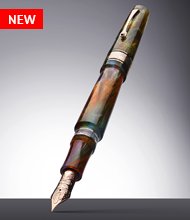

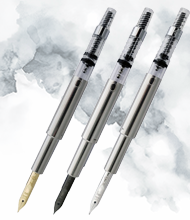
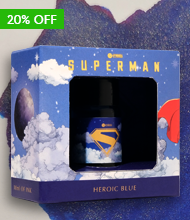
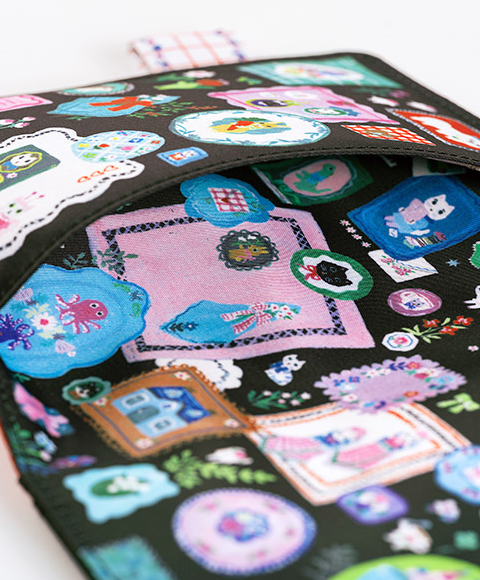
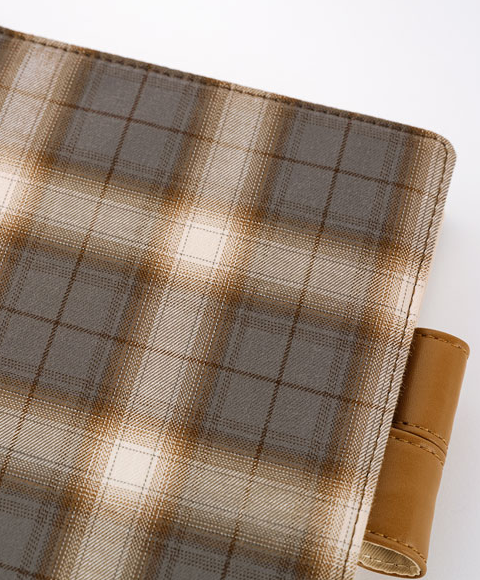
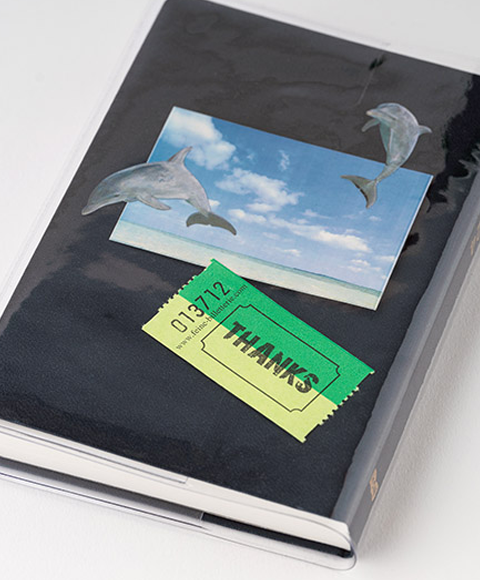
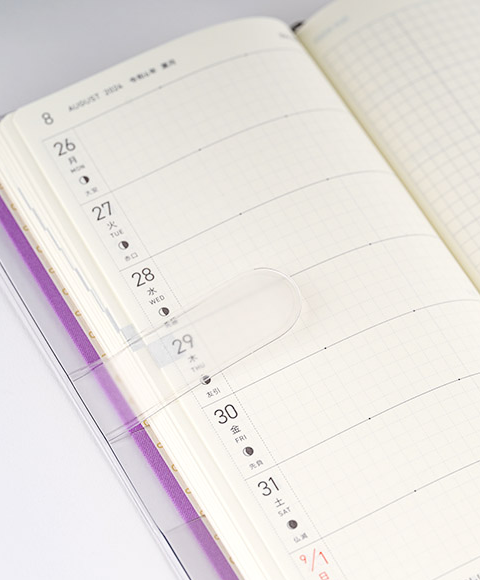
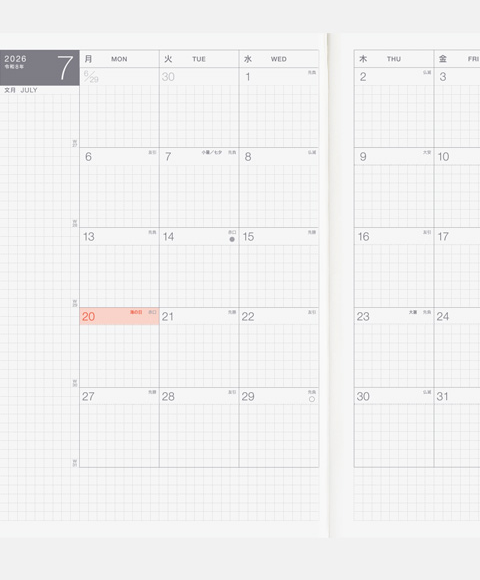
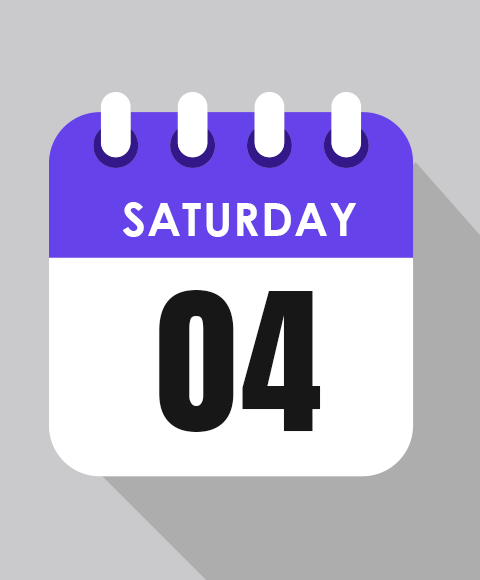
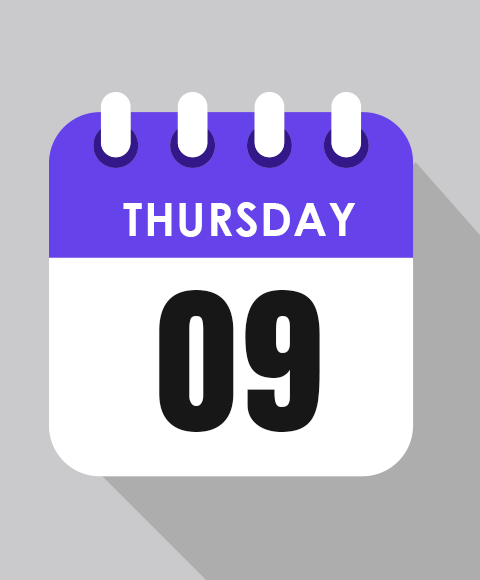
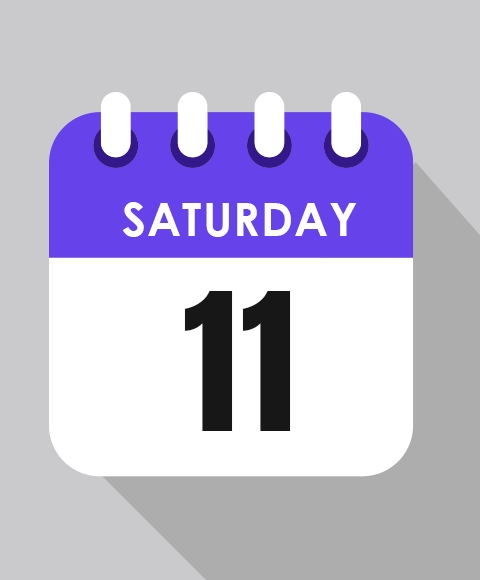
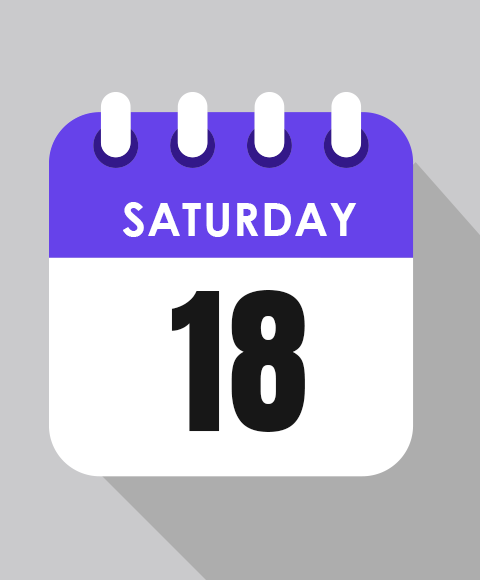
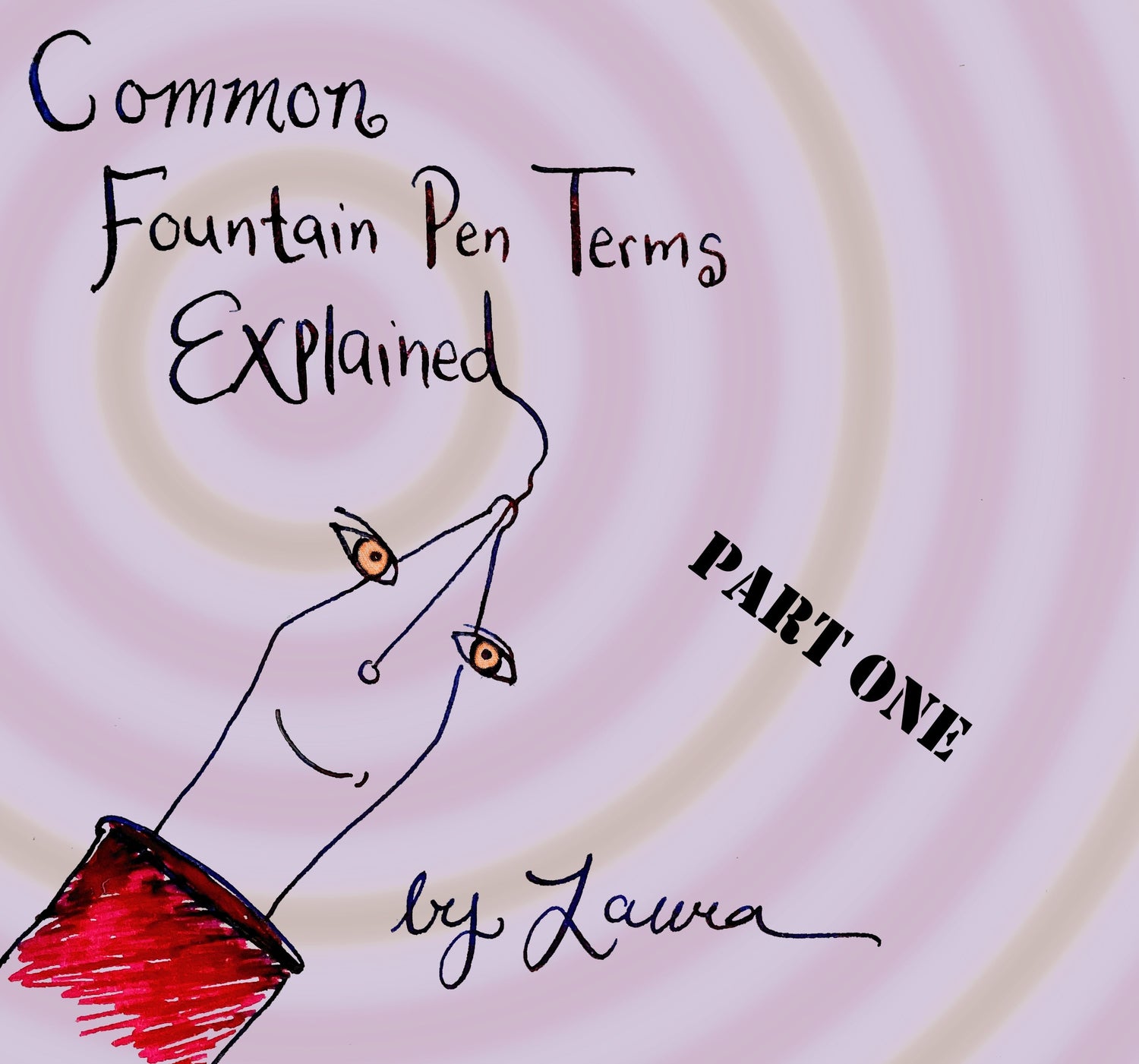
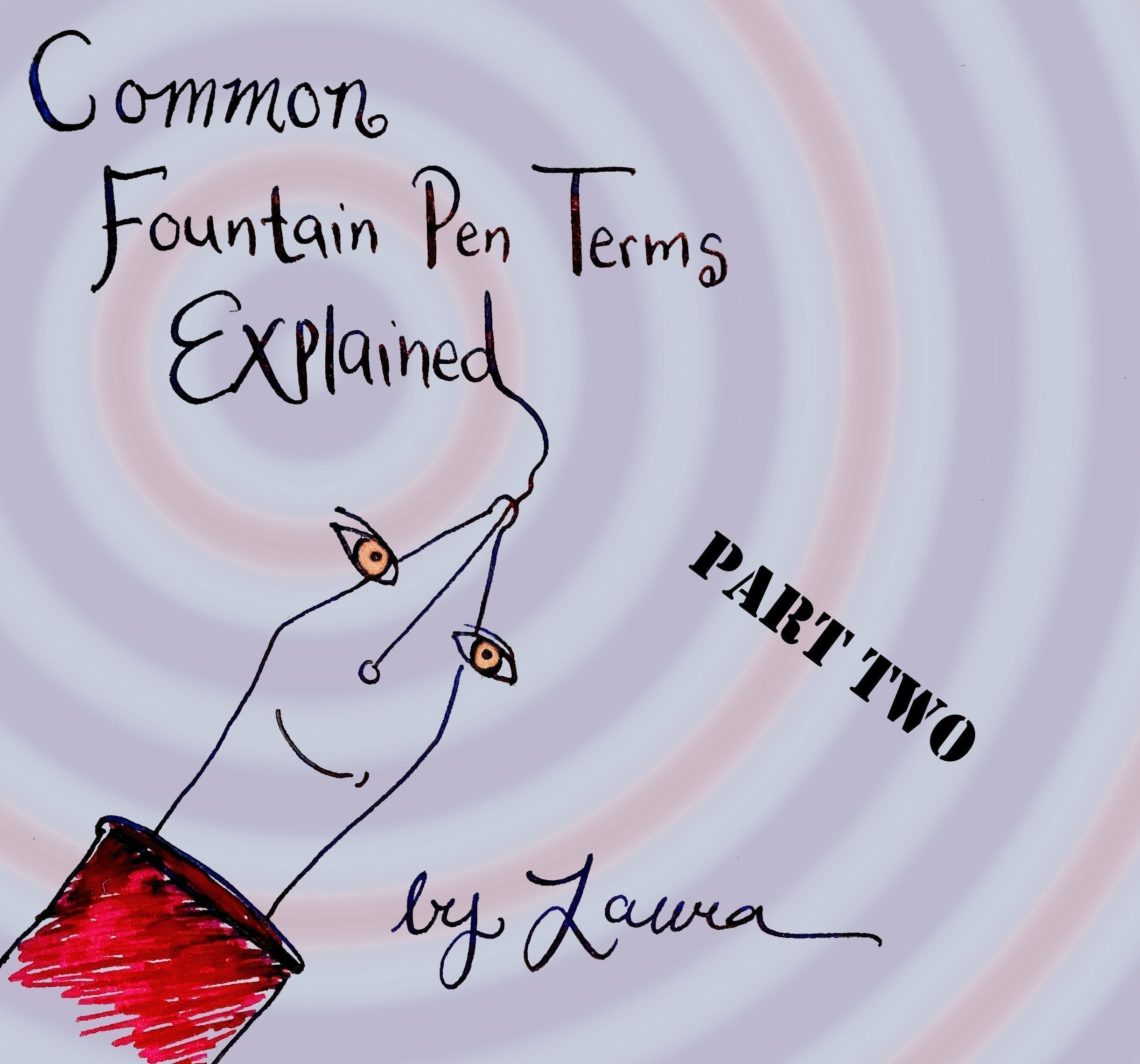
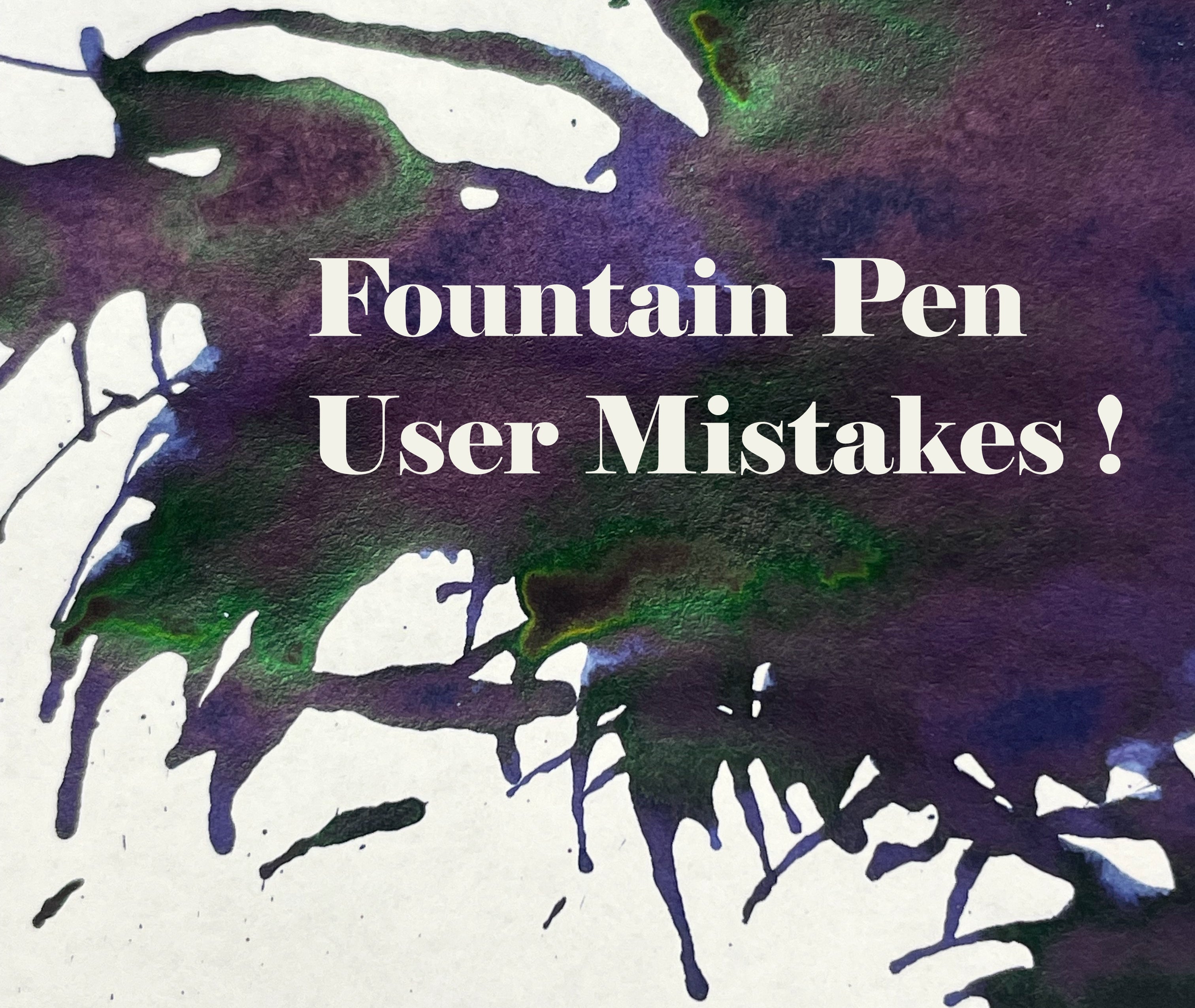

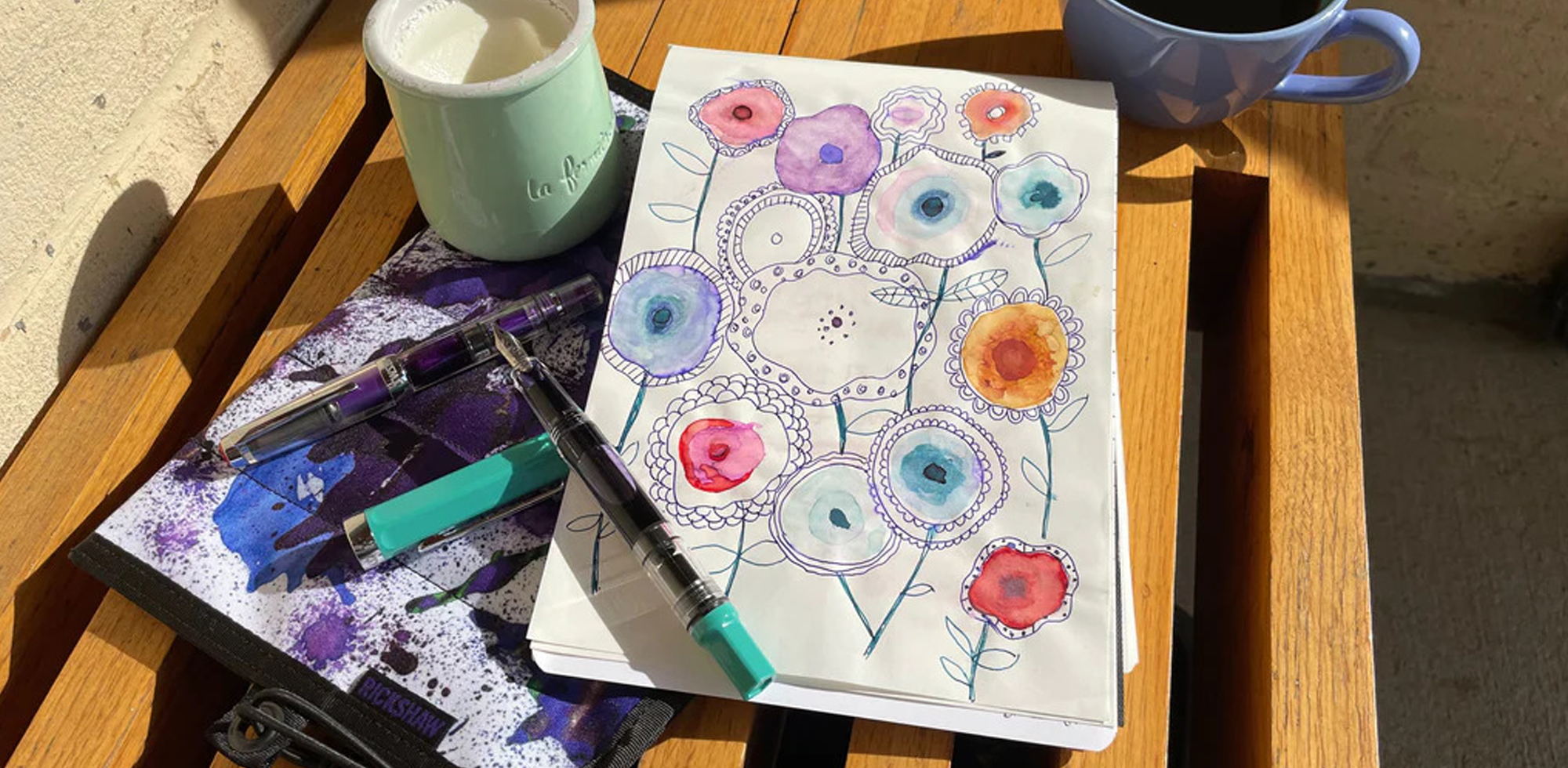
6 comments
Tara
Fun and informative article! I’d definitely heard of some of these but was surprised to learn some new terms and more about the terms I already knew!
Fun and informative article! I’d definitely heard of some of these but was surprised to learn some new terms and more about the terms I already knew!
Sujata
Thanks Laura! Great article with amazing photos that clearly illustrate the information being discussed.
Thanks Laura! Great article with amazing photos that clearly illustrate the information being discussed.
Roger Fairbrother
Thank you for all of the cool information. Now I am even more knowledgeable of my pens than before. I look forward to more articles in the future.
Thank you for all of the cool information. Now I am even more knowledgeable of my pens than before. I look forward to more articles in the future.
Cameron Meyer
This is a great post. I don’t know much about fountain pens so all of these terms and definitions are incredibly useful. I hope to see the other post with more words and information. Thank you.
This is a great post. I don’t know much about fountain pens so all of these terms and definitions are incredibly useful. I hope to see the other post with more words and information. Thank you.
Matt
Hi Lauren. Fun article! I’ll weigh in with my 2 cents on blind caps.
I believe the term only correctly applies to a removable cap that hides a separate device that is actually used to fill the pen. This is usually a button, but also could be a twist knob for a piston or captive converter. In your main photo the two on the far right are the only blind caps. The Pelikan, for instance, has a “piston knob” and the 823 and Homosapiens have “plunger knobs”; there’s nothing blind about them, as they’re not hiding or covering another mechanism.
Cheers!
Hi Lauren. Fun article! I’ll weigh in with my 2 cents on blind caps.
I believe the term only correctly applies to a removable cap that hides a separate device that is actually used to fill the pen. This is usually a button, but also could be a twist knob for a piston or captive converter. In your main photo the two on the far right are the only blind caps. The Pelikan, for instance, has a “piston knob” and the 823 and Homosapiens have “plunger knobs”; there’s nothing blind about them, as they’re not hiding or covering another mechanism.
Cheers!
Eric Arnold
ooh, i like this topic, i very much look forward to the sequels as you expand the lexicon! One thought on penabling – I just discovered a site this morning that makes it possible for you ti "hire (rent) a pen from another pen lover to try it out! This seems to me to be the intimate in penabling! Here’s the site: https://www.pensharing.com
Loved the palm load of converters phot! As always, all of your photos are exquisite!
Feedback on feedback: don’t forget the paper! The same nib will behave/feel very differently depending on the nature and texture of the paper. Clair Fontaine or Midori are generally thin smooth sheets that provide a more glassy feel. A heavier stock, like cara Puras Rivoli, or G. Lalo’s Verge de France can have a heavier and slightly rougher texture, and the nib will both behave and feel quite different on such papers. It is the combination of ink, nib and paper that truly brings joy when you find the right selection and your pen just sings!
I hadn’t considered finials being on either end; generally (architecturally and in furniture0 they are at the top of things. But that’s just the thing with a pen isn’t it? Either end can be the top depending on whether you are using it or storing it capped.
Speaking of caps, I’m definitely with Myk and Bill on this one. A cap is a lid; it is removable. A knob is used to adjust things, it is not meant to come off. The round protrusions on the faceplate of your stereo, stove, chest of drawers and on top of my desktop blotter are all knobs, not caps. A cap is a protective cover, whether that’s the ball cap on your head, the cap on your pen , or the cap on the end of camera lens. It is there to protect someone delicate, but can be removed when you need access. My piston filled Pelikans essentially have built in converters. They (like the converters) have knobs used to utilize that mechanisms. Converters don’t have blind caps, nor do the Pelikan piston filled pens. They have knobs. this one is pretty curt and dried for me. But we all know I’m a stickler for precise language and prickly…
As for demonstrators, thanks for showing Bill’s cut-away vanishing point, very cool! I have a TWSBI Diamond ALR with a broad nib, about the only pen I use shimmer inks in. The bonus in theses pens is you can see the glitter and how well it is distributed in the ink. The only other pen i have that one might call a demonstrator is a Pelikan M205 Duo, the yellow highlighter. Both of these, by the way, are piston fillers with a KNOB on the end of the barrel!
As for ink windows, I have to say I was a bit disappointed you did not include a photo of a Nahvalur Nautilus, whose porthole ink windows are just perfect for that pen.
Terms I’d like to see you address in future sequels: workhorse, ebonite, bounce, ghosting, PVD, shading vs. sheen vs. shimmer.
Awesome topic, well done as always Laura!
ooh, i like this topic, i very much look forward to the sequels as you expand the lexicon! One thought on penabling – I just discovered a site this morning that makes it possible for you ti "hire (rent) a pen from another pen lover to try it out! This seems to me to be the intimate in penabling! Here’s the site: https://www.pensharing.com
Loved the palm load of converters phot! As always, all of your photos are exquisite!
Feedback on feedback: don’t forget the paper! The same nib will behave/feel very differently depending on the nature and texture of the paper. Clair Fontaine or Midori are generally thin smooth sheets that provide a more glassy feel. A heavier stock, like cara Puras Rivoli, or G. Lalo’s Verge de France can have a heavier and slightly rougher texture, and the nib will both behave and feel quite different on such papers. It is the combination of ink, nib and paper that truly brings joy when you find the right selection and your pen just sings!
I hadn’t considered finials being on either end; generally (architecturally and in furniture0 they are at the top of things. But that’s just the thing with a pen isn’t it? Either end can be the top depending on whether you are using it or storing it capped.
Speaking of caps, I’m definitely with Myk and Bill on this one. A cap is a lid; it is removable. A knob is used to adjust things, it is not meant to come off. The round protrusions on the faceplate of your stereo, stove, chest of drawers and on top of my desktop blotter are all knobs, not caps. A cap is a protective cover, whether that’s the ball cap on your head, the cap on your pen , or the cap on the end of camera lens. It is there to protect someone delicate, but can be removed when you need access. My piston filled Pelikans essentially have built in converters. They (like the converters) have knobs used to utilize that mechanisms. Converters don’t have blind caps, nor do the Pelikan piston filled pens. They have knobs. this one is pretty curt and dried for me. But we all know I’m a stickler for precise language and prickly…
As for demonstrators, thanks for showing Bill’s cut-away vanishing point, very cool! I have a TWSBI Diamond ALR with a broad nib, about the only pen I use shimmer inks in. The bonus in theses pens is you can see the glitter and how well it is distributed in the ink. The only other pen i have that one might call a demonstrator is a Pelikan M205 Duo, the yellow highlighter. Both of these, by the way, are piston fillers with a KNOB on the end of the barrel!
As for ink windows, I have to say I was a bit disappointed you did not include a photo of a Nahvalur Nautilus, whose porthole ink windows are just perfect for that pen.
Terms I’d like to see you address in future sequels: workhorse, ebonite, bounce, ghosting, PVD, shading vs. sheen vs. shimmer.
Awesome topic, well done as always Laura!